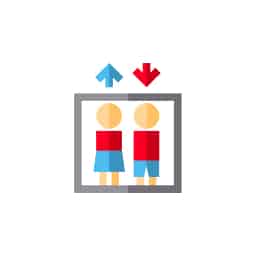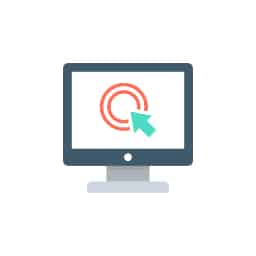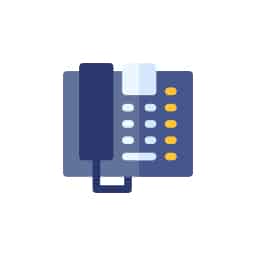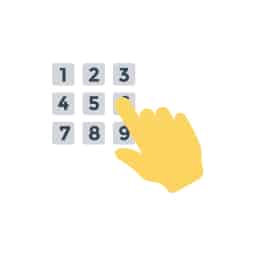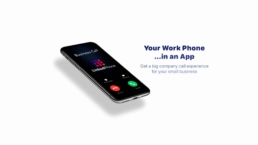6 Tricks For Handling Rejection as a Small Business Owner
Most people are so afraid of rejection, of hearing the word “no,” that they won’t even try to pursue their goals. Instagram, Twitter, and autobiographies by millionaires and billionaires make it seem like only those with a special spark, innate intelligence, or groundbreaking idea are able to succeed.
Many of these stories pitch the idea that anyone can earn a six figure income their first year in business if they just work hard enough. In reality, these influencers are glossing over the years of labor and failures that came before.
They also overshadow the millions of small businesses (32.5 million to be exact) that are paying their bills and earning a profit in the United States right now – just without all the fanfare. It’s possible to get over the fear of failure and learn to handle rejection in a way that sets you up for future success.
Rejection Gives You Direction
It hurts to hear “no” when you’ve put everything into your product or service. But not every “no” is a bad thing. In fact, rejection can help you hone your skills and guide you towards a more profitable business.
Some things are close to impossible to perfect until you’re in the trenches, like:
- Market fit: Your business isn’t going to provide value to everyone. Seeing which types of people or companies become customers can help you target the right demographics in the future.
- Pricing: If you are taking a new product to market, you probably don’t know the price point that resonates best with your customers. After many sales pitches that work, or don’t work, you’ll start to understand if you need to change your rates – possibly by doubling them.
- Perfecting your sales pitch: A common trap for salespeople is when they make assumptions about what the customer wants. You might be trying to solve a problem that doesn’t really exist for your target buyer. Pitching your product over and over helps you understand your customers’ real challenges and how to solve those problems.
LinkedPhone serves the small business community with local & toll-free business numbers that work with your cell phone, desk phone, & laptop. Add a 2nd phone number to your cell phone with our mobile app. Talk & text with clients on the go. Add team members too. Finally break free from the desk phone. At LinkedPhone, freedom rings! 🔔📱💻☎️
6 Tricks to Help You Overcome Rejection
So ignore the influencers because they aren’t telling you the whole truth – they made a lot of mistakes along the way to their success. But there’s also a lot to learn from hearing “no,” even if it hurts sometimes. Here are six tricks to help you bounce back after a rejection.
1. Remember, it's Not Personal
Selling requires you to connect with people and it can be hard to hear “no” when you’ve put yourself out there. It feels like they’re rejecting you as a person. But it’s rarely personal. Rejection happens when the customer doesn’t see the right solution for their needs right now.
Your product just isn’t a fit for the problem that they are trying to solve today. They may love the luxury car that you’re selling, but if all they need and can afford is an economy car, you were never going to make the sale – even if you pitched your car perfectly.
“Failure is a part of the process. You just learn to pick yourself back up.”
― Michelle Obama
2. Don't Assign Blame
Just as you shouldn’t take rejection personally, you shouldn’t point fingers at someone to blame when a sale goes wrong. It’s easy to think that the customer just didn’t understand; that they are at fault for not seeing the value of your offering. It’s also easy to blame yourself for missing an important detail or making a mistak. But as Star Trek’s Captain Jean-Luc Picard says, “It is possible to commit no mistakes and still lose. That is not a weakness; that is life.”
“You may encounter many defeats, but you must not be defeated. In fact, it may be necessary to encounter the defeats, so you can know who you are, what you can rise from, and how you can still come out of it.” ― Maya Angelou
3. Hearing “No” Now, Doesn’t Mean it’s a “No” Forever
Over time, your customers’ needs will change. They may not have needed your product two years ago when you first spoke with them, but they could really use it now that they’ve grown. By accepting their rejection gracefully, they’ll remember your professionalism and may pull you into a more lucrative deal in the future.
Try to keep in touch with your lost sales leads over time. It could be as simple as sending a personal email once a year to see how their business is doing and asking if you can help. Or you can follow their business on social media and occasionally engage with their posts. Stay top of mind for future purchases.
“You have to be able to accept failure to get better.” Lebron James
4. The More You Pitch, the Easier it Gets
Rejection can really sting if you only put yourself out there occasionally. Ask any salesperson and they will tell you that sales is a numbers game. If you call two dozen leads a day, you’re going to hear mostly “no’s.”
But there will be a “yes” around the corner. By repeatedly exposing yourself to potential rejection, you’ll learn to accept hearing “no” multiple times a day because, with perseverance, you’ll also hear “yes.” Things won’t feel so personal anymore.
“We need to accept that we won’t always make the right decisions, that we’ll screw up royally sometimes – understanding that failure is not the opposite of success, it’s part of success.” ― Arianna Huffington
5. Let Yourself Feel a Little Disappointed, Then Move On
Sometimes you’ll lose a sale unexpectedly. Even after all the hard work, relationship building, and contract negotiations, there is always a chance that your customer will back out of the deal at the last minute.
It’s okay to be disappointed and to sit with that emotion for a short time. We’re only human and it hurts to have your hopes dashed. But don’t wallow for too long. You’ve learned some valuable information from this experience and can approach your next sale better prepared than before. So get back to it.
“My grandmother once told me, ‘Don’t let failure go to your heart and don’t let success go to your head.'” ― Will Smith
6. Adopt a Growth Mindset
Psychologist Dr. Carol Dweck identified that people have one of two mindsets: a growth mindset or a fixed mindset. A growth mindset believes that we can always learn and continue to grow our skill sets. A fixed mindset believes that a person’s qualities can’t be changed; that you are born with a limit to your potential growth.
By adopting a growth mindset, you prioritize a dedication to learning, even when things aren’t going well. Failing once doesn’t mean that you will always fail; failure doesn’t define who you are. Mistakes are part of your journey towards success.
Sometimes all you’ll hear for a while is “no.” It can seem like you’re never going to make a sale again. But the past is not a predictor of the future. Every mistake along the way taught you something that can help you improve on your next attempt. You might be starting the process over again, but you’re not starting from scratch.
“There is no innovation and creativity without failure. Period.” ― Brene Brown
Takeaways for Handling Rejection
If you’re one of the 32.5 million small business owners in America today, you’re already a step ahead of everyone else. Every time a customer says “no,” use it as a learning opportunity in order to improve your product and your sales pitch for the future. Happy selling!
Business Growth Toolkit
Get the latest thought leadership insights on growing your business plus occasional LinkedPhone updates. We respect your inbox!
Small Business Resources
A special high five to Tahera Ali Khan for her outstanding research and contributions to this article. We love working with and supporting like-minded entrepreneurs. Thank you Tahera! ❤️
Get In Touch
We would love to hear from you.
Please contact us at any time with questions or feedback.







